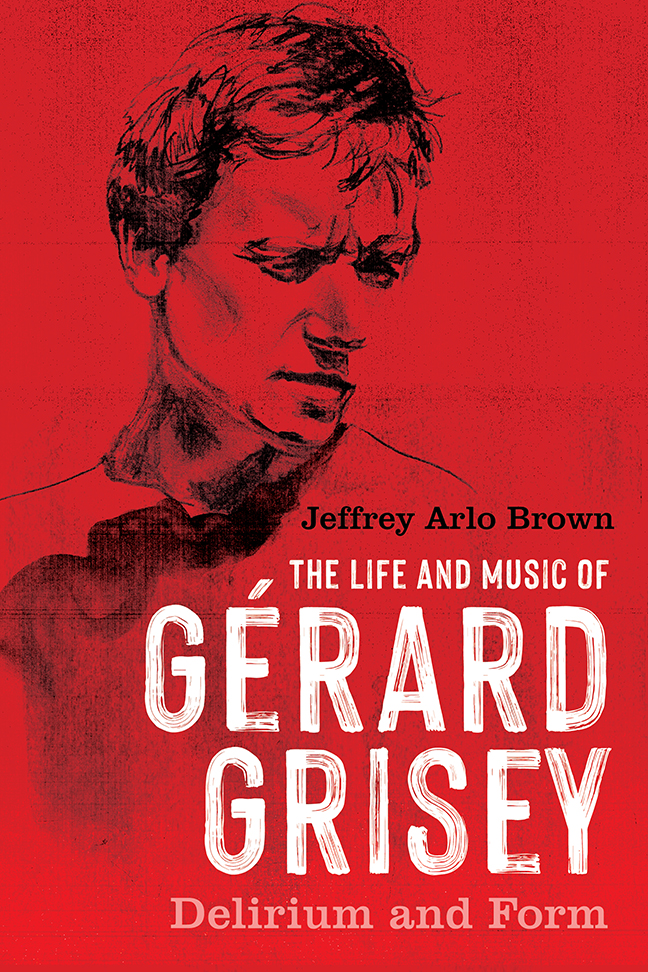Book contents
- Frontmatter
- Contents
- List of Illustrations
- Acknowledgments
- One The Lost Voice (1946–61)
- Two The Carnal Shell (1961–65)
- Three The Rhythm of Love (1965–67)
- Four Exchange Beyond Language (1968–70)
- Five The Silence that Attracts (1970–72)
- Six The Sensual Embrace (1972–74)
- Seven Ultimate Fusion (1974–78)
- Eight Astarte (1978–79)
- Nine Extreme Pleasure, Extreme Pain (1980–82)
- Ten The Grains of Sound (1982–86)
- Eleven Absolute Love (1986–88)
- Twelve Seduced by the Star (1988–91)
- Thirteen Suggestions of the Infinite (1991–96)
- Fourteen Nut (1996–98)
- Fifteen Berceuse
- Appendix: Recordings of Music by Gérard Grisey
- Bibliography
- Index
Nine - Extreme Pleasure, Extreme Pain (1980–82)
Published online by Cambridge University Press: 17 December 2023
- Frontmatter
- Contents
- List of Illustrations
- Acknowledgments
- One The Lost Voice (1946–61)
- Two The Carnal Shell (1961–65)
- Three The Rhythm of Love (1965–67)
- Four Exchange Beyond Language (1968–70)
- Five The Silence that Attracts (1970–72)
- Six The Sensual Embrace (1972–74)
- Seven Ultimate Fusion (1974–78)
- Eight Astarte (1978–79)
- Nine Extreme Pleasure, Extreme Pain (1980–82)
- Ten The Grains of Sound (1982–86)
- Eleven Absolute Love (1986–88)
- Twelve Seduced by the Star (1988–91)
- Thirteen Suggestions of the Infinite (1991–96)
- Fourteen Nut (1996–98)
- Fifteen Berceuse
- Appendix: Recordings of Music by Gérard Grisey
- Bibliography
- Index
Summary
From January 3 to March 31, 1980, Grisey participated in a course for composers at IRCAM, the musical research institute founded by Pierre Boulez at the Centre Pompidou in Paris. In these early days of the institute, the tech-nology was clunky, with even simple acoustic procedures requiring hours of labor. But the participants’ enthusiasm was palpable; the atmosphere was one of chaos, excitement, and fruitful exchange between science and art.
Grisey's teacher during the course was the eminent American psychoacoustician David Wessel, whom Boulez had brought to Paris in 1976. In the summer of 1980, Wessel was joined on the IRCAM faculty by Stephen McAdams, a Canadian researcher who specializes in music cognition and perception, topics of acute interest to Grisey. Wessel introduced Grisey to McAdams.
Grisey's interest was moving from the abstract concepts of traditional acoustics, explored in pieces such as Périodes and Partiels, to the messier realities of the human processing of sound. Grisey had wide-ranging conversations with McAdams throughout the early 1980s. They organized some “mini informal experiments” on the composer's idea of instrumental synthesis, where a spectral harmony strikes the ear as somewhere between a chord with distinct pitches and a single sound. This state of fragile fusion was of profound interest to Grisey at this point in his aesthetic development. “I remember hearing a rehearsal. Boulez was conducting a piece of Grisey’s,” McAdams recalled. “Boulez had a very analytical ear and he could hear anything out of anything, regardless of how complex it was. He was trying to make it so that he could hear everything. Grisey was like, ‘No, no, no, no. It's supposed to all melt together.’”
Grisey and McAdams tried to find the point where this state of fusion would disintegrate: when did certain pitches or overtones emerge to the extent that our brains would process them separately? How could the Western tuning of equal temperament be tweaked to achieve this spectral fusion without recourse to complex microtonal notation? The ultimate judge for the integration of these scientific experiments on instrumental synthesis in Grisey's music was a non-scientific one, namely Grisey and McAdams's “collective ears.”
McAdams was struck by the lack of boundaries in Grisey's thinking.
- Type
- Chapter
- Information
- The Life and Music of Gérard GriseyDelirium and Form, pp. 147 - 170Publisher: Boydell & BrewerPrint publication year: 2023

